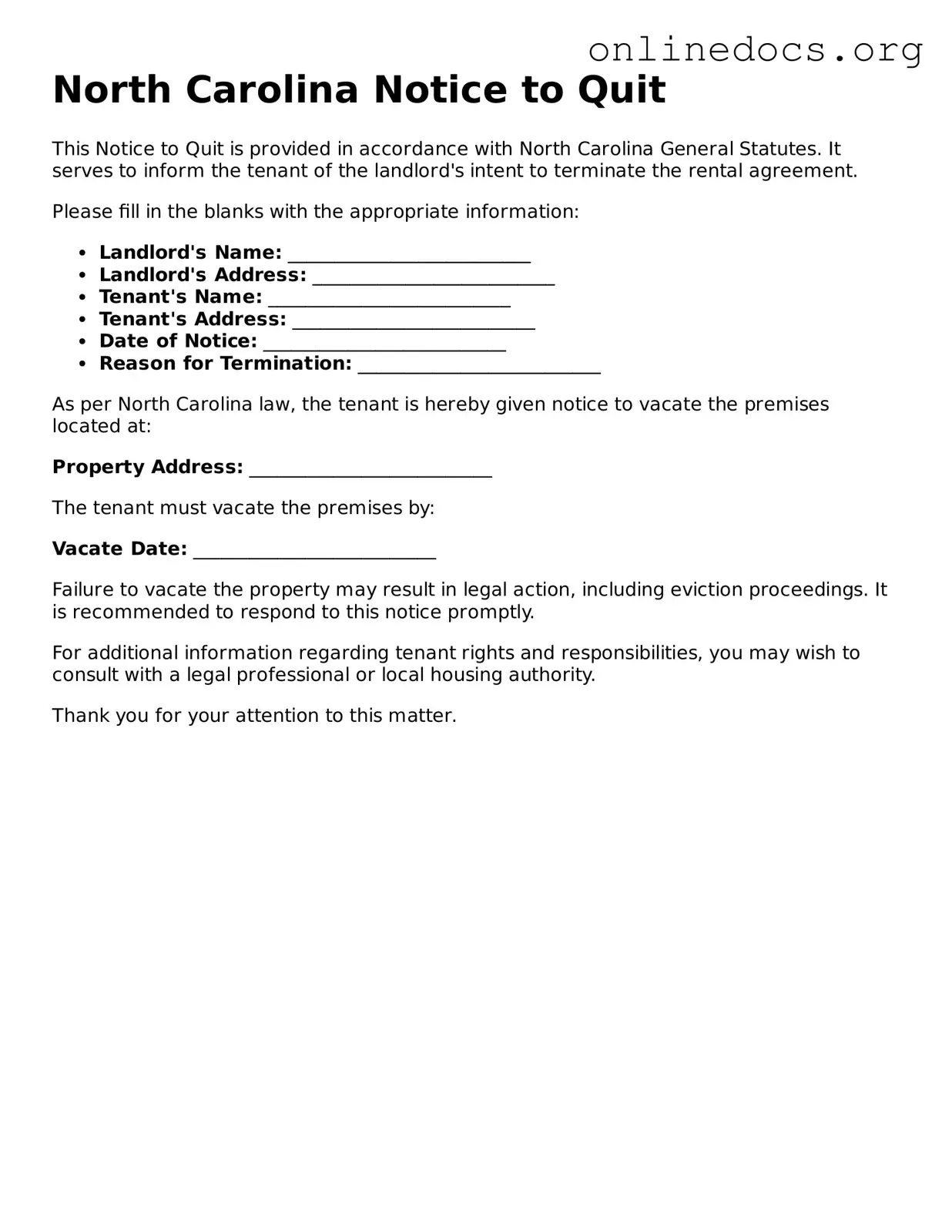The North Carolina Notice to Quit form shares similarities with the Eviction Notice, which is commonly used in many states. An Eviction Notice serves as a formal communication from a landlord to a tenant, indicating that the tenant must vacate the rental property. Like the Notice to Quit, it typically outlines the reason for eviction and provides a specific timeframe for the tenant to leave. Both documents aim to initiate the process of removing a tenant who has violated lease terms or failed to pay rent.
Another document that resembles the Notice to Quit is the Pay or Quit Notice. This notice is issued when a tenant fails to pay rent on time. It informs the tenant that they must either pay the overdue rent or vacate the premises. Similar to the Notice to Quit, it sets a deadline for compliance, emphasizing the urgency of the situation. Both documents serve to protect the landlord's rights while also giving tenants a clear understanding of their obligations.
The Three-Day Notice is also comparable to the Notice to Quit. Often used in various states, this notice informs tenants that they have three days to remedy a lease violation, such as non-payment of rent. If the tenant does not comply, the landlord can proceed with eviction. Both documents are crucial in the eviction process, providing tenants with an opportunity to address issues before legal action is taken.
The 30-Day Notice to Terminate Tenancy is another similar document. This notice is used by landlords to inform tenants that their lease will not be renewed and they must vacate the property. Unlike the Notice to Quit, which may be issued for specific violations, the 30-Day Notice is typically used for non-renewal situations. Both documents require clear communication from landlords to tenants about their rights and responsibilities.
The Lease Termination Letter also bears resemblance to the Notice to Quit. This letter is sent by either party to formally terminate a lease agreement. It outlines the end date of the lease and any necessary steps for vacating the property. Both documents aim to ensure a smooth transition for both landlords and tenants, providing clarity on the end of the tenancy.
The Notice of Lease Violation serves a similar purpose as the Notice to Quit. This document is used to inform tenants of specific lease violations, such as unauthorized pets or excessive noise. It gives tenants a chance to correct the issue within a specified timeframe. Like the Notice to Quit, it emphasizes the importance of adhering to lease terms and the consequences of failing to do so.
The Notice of Non-Renewal is also akin to the Notice to Quit. This notice informs tenants that their lease will not be extended beyond its current term. It is particularly relevant in month-to-month rental agreements. Both documents serve to clarify the end of a tenancy and provide necessary timelines for both parties to prepare for the transition.
Understanding the significance of a well-drafted document like a Power of Attorney form can empower you in managing your affairs effectively, especially in healthcare or financial situations. For more information, explore this comprehensive guide on Power of Attorney.
Lastly, the Demand for Possession is similar to the Notice to Quit. This document is often used in legal proceedings to formally request that a tenant vacate the property. It typically follows an eviction notice and is part of the legal process for reclaiming possession. Both documents highlight the landlord's right to regain control of their property and provide tenants with essential information about their situation.
